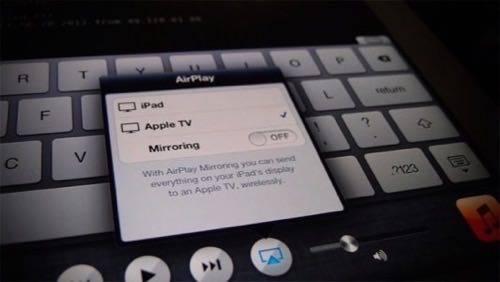
Miraculously, my block in northern Philadelphia was spared from Hurricane Sandy’s worst. As word of nearby power outages spread on Twitter, I was certain I’d wake up to a dark, powerless house on Tuesday. Fortunately for my mother – a last minute refugee from South Jersey who breathes with the aid of an oxygen machine – that didn’t happen. It also allowed us to stay up to date with the latest news, tweets, all of the Instagram photos and video footage of Sandy’s wrath. Throughout the experience, not once did I regret not having a cable TV subscription.
For the 48 hours that my mother and sister were hunkered down with a friend and me in my Philadelphia row house, we used my iPad and other mobile devices to stay in touch with the outside world. Combined with the Apple TV and its AirPlay feature, it completely eliminated the need for cable or even a broadcast antenna. As cord cutters, we felt totally plugged in.
Philadelphia’s local ABC affiliate streams news broadcasts for free through its iPad app, which allowed us to tune into the kinds of dispatches that only a local broadcast news team can deliver during a natural disaster. Still, it is 2012 and that format very much has its limits. While local newscasters diligently surveyed storm damage at the Jersey shore, other news was breaking live on Twitter, much of it accompanied by photos and video footage. Flooded Manhattan streets. The Con-Ed plant explosion. New York’s pitch-black skyline. All of it was unfolding on Twitter in real-time, as news now does.
Hashtags like #hurricanesandy and #sandyinphilly made it easy to break the firehose down into geographic chunks. And it was all displayed on my 46-inch HDTV for everyone to see. Of course, we had to be careful about trusting unverified sources and read tweets with a healthy dose of skepticism.
Searching For Crucial Details Online
During severe weather, our information needs often extend beyond the scope of what local broadcast news or even free-flowing social media can meet. Sometimes, we need to know very specific things that newscasters may or may not get around to talking about. Is the Garden State Parkway closed? Are the roads leading to my mother’s apartment complex flooded?
With emergency hotlines jammed, the best source for details like that is often the Internet. Some counties publish up-to-date information on their own websites. More often, they rely on social networks to get the word out. In far too many cases, the only place to get updates from local government is through reports published by newspapers, whose websites can vary wildly in terms quality and how frequently they’re updated. Hunting for those granular details can seem like a wild goose chase, but searching the Web on a big screen – with other people – is more effective and more satisfyingthan sitting, staring and waiting for a news anchor to tell you the specific thing you need to know.
Connecting With Family Over FaceTime And Skype
For people holed up indoors during a storm, video chat offers a new and comforting way to connect with loved ones in other areas. And using FaceTime on the iPad and beaming it to a television via AirPlay makes it easier for groups of people to do this without crowding around somebody’s laptop. The same is true of Skype or whatever your video chat app of choice happens to be.

My brother and his family live in a part of Massachusetts that was affected by the storm, albeit not as seriously as New Jersey. Using FaceTime, I called his iPhone from my iPad and propped the tablet up in front of the TV, to which the video chat screen was being AirPlayed. This allowed us all to sit on the couch and have a conversation with my brother and his wife while our adorable three-year-old niece played hide-and-go-seek with herself in the background. Yes, we could have easily called them on the phone the old-fashioned way, but video chat allowed us to see their faces and interact with them – difference that’s all the more meaningful when you’re locked inside and stressing about possible storm damage.
Tablet-Based Entertainment Without Cable
When the call was over, it took about five seconds and a few gestures to switch back to whatever streaming video we felt like watching. It wasn’t just breaking news and social media feeds, either. When my family needed a break from pictures of devastation, Hulu Plus, Netflix and a host of other video content apps were at the ready with virtually unlimited hours of mindless entertainment, including recent episodes of current TV shows. No cable bill required.
I happened to be using Apple products to do all of this, but the same could be done with various combinations of tablets, smartphones and platforms like Google TV, Roku or Boxee. In my case, Apple’s famed ease-of-use came in handy, since I had plenty of work to do upstairs and had to hand off the iPad to less tech-savvy members of my family. The iOS interface can actually end up being easier to understand and use than many TV remote controls.
We lucked out and the power stayed on. If it had gone out, at least some of the highest-priority communication and information-seeking tasks we needed to do still could have been accomplished from our smartphones. For as long as the batteries – and cellular networks – lasted.










